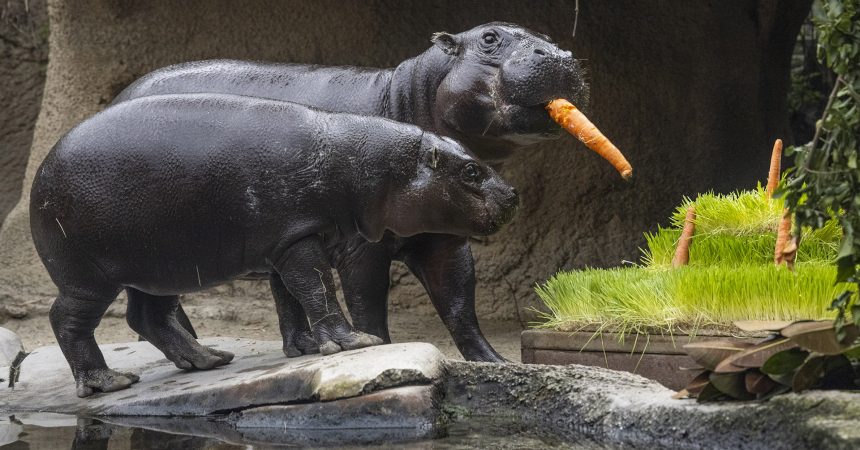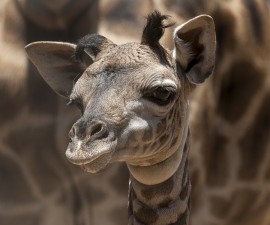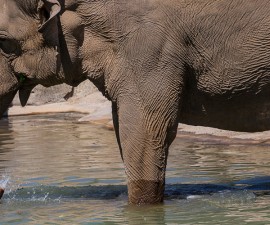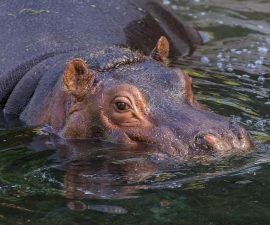Mom and calf, Akobi and Mabel, enjoyed holiday wreaths made of branches from ficus and colorful watermelon pieces, both favorite food items for the hippos.
Although the Zoo is closed to guests, the animals are still celebrating the holidays. Today (Dec. 21, 2020), wildlife care specialists created holiday wreaths and gave them to Akobi and Mabel, pygmy hippos at the San Diego Zoo. This offering to the pygmy hippos is just part of ongoing activities by the organization’s wildlife care experts to offer engaging experiences to the animals in their care.
One of the San Diego Zoo’s newest additions, this is Akobi’s first holiday season. Mabel gave birth to Akobi on April 9, 2020. This is her first calf, and the first successful birth of a pygmy hippo at the San Diego Zoo. The young hippo is thriving with his mother in their habitat in the Zoo’s Lost Forest, which is also home to other species for them to interact with including: African cichlid (a species of fish), a pair of Wolf’s monkeys and a pair of lesser spot-nosed monkeys.
Pygmy hippos are listed as Endangered on the International Union for Conservation of Nature (IUCN) Red List of Threatened Species, and live in rivers and streams in the forests of West Africa. While their historic range was much larger, pygmy hippos are now found in only four countries: Côte d’Ivoire, Guinea, Liberia and Sierra Leone. Fewer than 2,500 pygmy hippos now remain in Africa, and the primary threats to this species’ population are logging, farming and human settlement in the areas where pygmy hippos live.
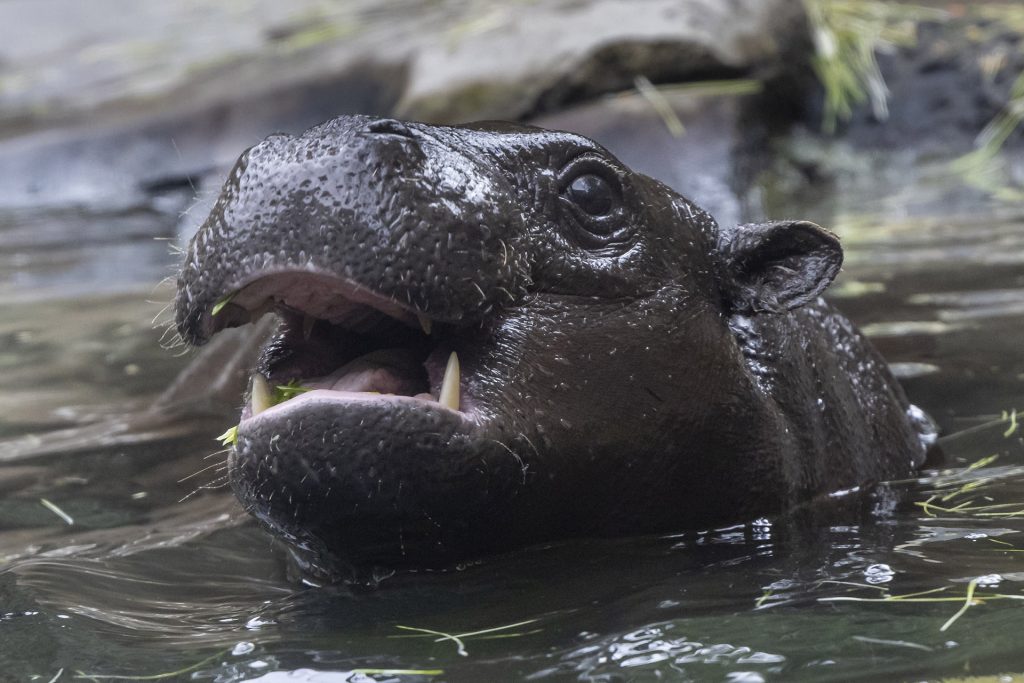
The pygmy hippo is related to the river hippopotamus, but is a different species. While they may look similar, they share few characteristics. A river hippo may weigh up to 10 times more than a pygmy hippo and can be more than twice as large—and pygmy hippos spend more time on land than in the water and are predominately nocturnal.
As a leader in conservation, the work of San Diego Zoo Global includes on-site wildlife conservation efforts (representing both plants and animals) at the San Diego Zoo, San Diego Zoo Safari Park, and San Diego Zoo Institute for Conservation Research, as well as international field programs on six continents. The work of these entities is made accessible to over 1 billion people annually, reaching 150 countries via social media, our websites and the San Diego Zoo Kids network, in children’s hospitals in 12 countries. The work of San Diego Zoo Global is made possible with support from our incredible donors committed to saving species from the brink of extinction.

